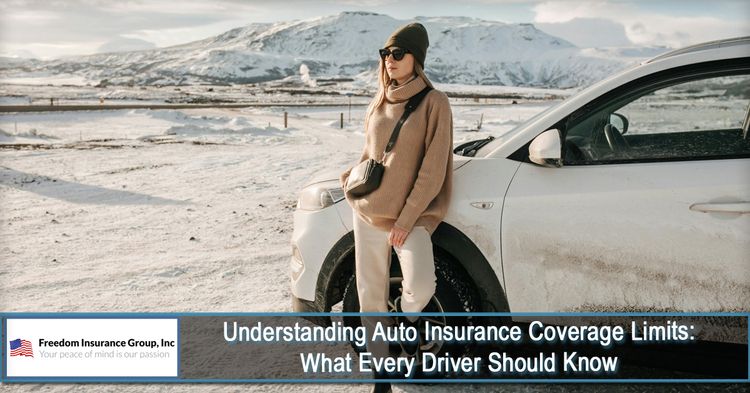
When shopping for auto insurance, it’s easy to focus on getting the lowest premium. But an often-overlooked element—coverage limits—can make or break your financial protection in the event of an accident. Understanding how these limits work is essential to choosing a policy that truly safeguards you, your passengers, and your finances.
What Are Auto Insurance Coverage Limits?
Auto insurance coverage limits refer to the maximum amount your insurance provider will pay for a covered claim. Any expenses that exceed those limits become your responsibility out of pocket.
Each type of auto insurance coverage (like liability, collision, or uninsured motorist coverage) may have its own limits, often expressed in split values or as a combined single limit.
Common Types of Coverage and Their Limits
1. Bodily Injury Liability (BI)
Covers medical costs and legal fees if you're at fault for an accident that injures someone else.
- Split Limit Example: $100,000/$300,000
- $100,000: Max per person injured
- $300,000: Max for all injured in a single accident
2. Property Damage Liability (PD)
Covers repair or replacement of another person’s property you damage in an accident.
- Typical Limit: $50,000 per accident
3. Personal Injury Protection (PIP)
Pays for your medical expenses (and sometimes lost wages) after an accident, regardless of fault.
- Limit options: Often range from $5,000 to $50,000
4. Collision Coverage
Pays for damage to your own vehicle from a collision with another vehicle or object.
- Limit: Based on actual cash value (ACV) of your vehicle, minus your deductible
5. Comprehensive Coverage
Covers damage from non-collision events like theft, fire, hail, or falling objects.
- Limit: Also based on ACV, subject to deductible
6. Uninsured/Underinsured Motorist (UM/UIM)
Covers your costs if you're hit by a driver with no insurance or too little coverage.
- Typical Limits: Match your bodily injury limits (e.g., $100,000/$300,000)
Split Limits vs. Combined Single Limits
- Split Limits: Separate maximum amounts for bodily injury per person, bodily injury per accident, and property damage.
Example: $100,000/$300,000/$50,000
- Combined Single Limit (CSL): One maximum amount to cover all liability claims in a single accident.
Example: $300,000 CSL
CSL policies offer more flexibility but may have higher premiums.
How to Choose the Right Coverage Limits
Choosing the right coverage limits depends on your assets, driving habits, and state requirements.
Consider these tips:
- Follow your state’s minimum laws, but don’t stop there—minimums are often too low to provide real protection.
- Assess your net worth. If you cause a serious accident, you could be sued for damages that exceed your policy limits.
- Increase liability limits if you have significant savings, a home, or other assets to protect.
- Consider umbrella insurance if you want even higher protection beyond your auto policy.
- Balance higher limits with deductible levels to manage your premium costs.
Why Coverage Limits Matter
Having the wrong limits could cost you thousands. Here’s why:
- You cause a major accident with $200,000 in injuries and only have a $50,000 BI limit.
You’re responsible for the remaining $150,000.
- Your vehicle is totaled, and your policy only covers the current depreciated value.
If your car loan is higher than the value, you’ll pay the difference unless you have gap coverage.
Final Thoughts
Auto insurance isn’t just about compliance—it’s about protection. Choosing the right coverage limits means you're financially prepared for the unexpected. While higher limits may come with slightly higher premiums, they can save you from massive out-of-pocket costs in a serious accident.
Talk to your insurance agent to review your current limits and make sure they align with your financial needs and lifestyle.
At Freedom Insurance Group, Inc., we aim to provide comprehensive insurance policies that make your life easier. We want to help you get insurance that fits your needs. You can get additional information about our products and services by calling our agency at 828-322-7474. Get a free quote today by CLICKING HERE.
Disclaimer: The information presented in this blog is intended for informational purposes only and should not be considered as professional advice. It is crucial to consult with a qualified insurance agent or professional for personalized advice tailored to your specific circumstances. They can provide expert guidance and help you make informed decisions regarding your insurance needs.
